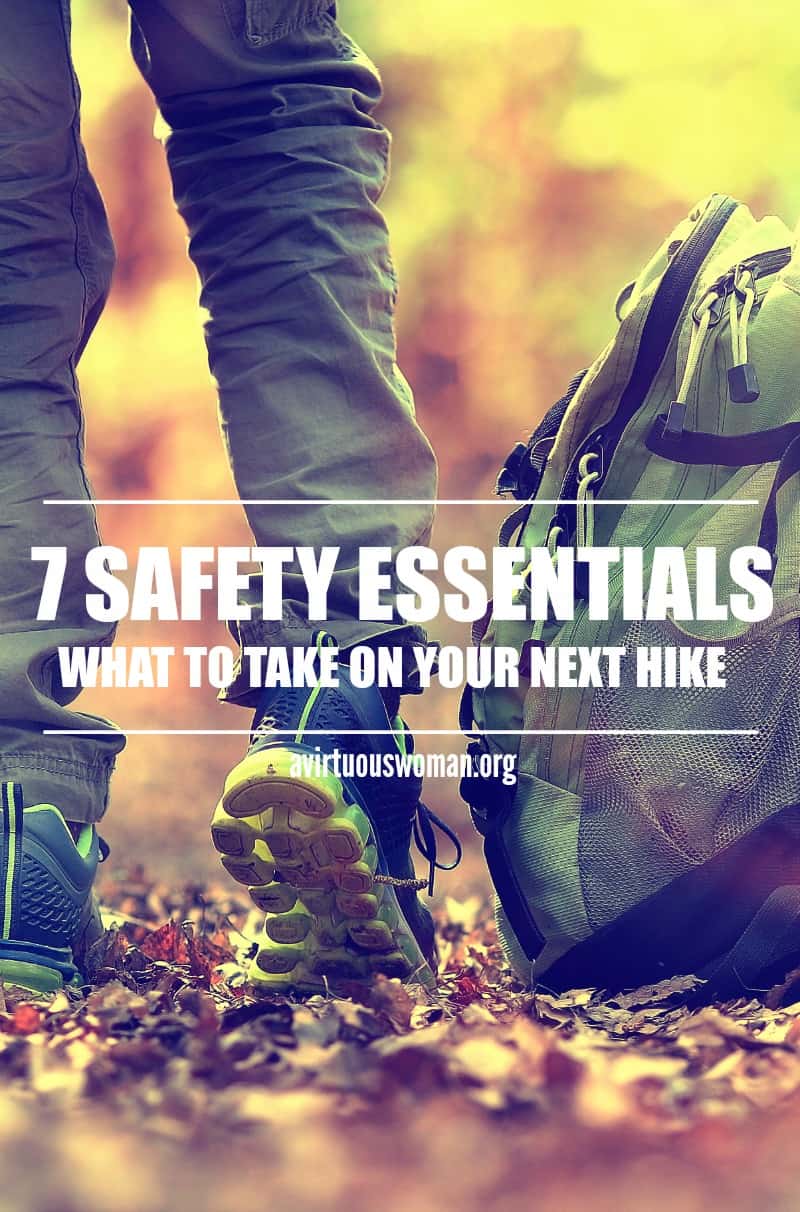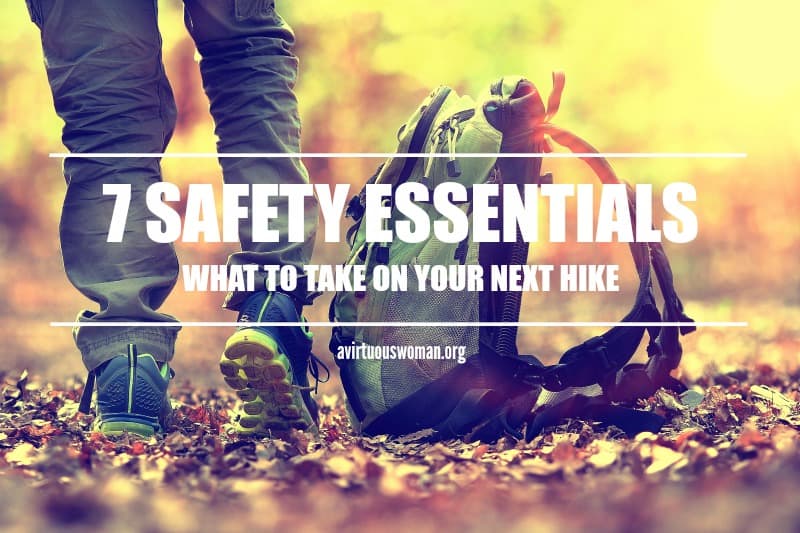7 Safety Essentials for Hiking

Hiking is one of my all-time favorite activities to do with my family. We go on hikes all year round – even in the winter. There’s just something so wholesome and stress relieving about being outdoors, breathing fresh air, and enjoying God’s beautiful nature.
In fact, I recently read an interesting article about how people who hike on regular basis have less stress and lower blood pressure. It’s really good for your mind, body, and soul!
It’s important when you’re out for a hike to think ahead to any problems you might encounter. I always carry a backpack with a few essentials. Some of them I’ve never needed. But you just never know when something could go wrong. People don’t plan for accidents or getting lost or even for the sun going down faster than they can get off the trail. And when you’re hiking with kids, it’s even more important to think about safety.
7 Safety Essentials for Hiking
Packing safety gear for your hiking trip, whether it is in the back country or on a day hike at a park is just a good habit to get into. Being sure to include these safety essentials as part of your hike every time, you will find yourself more prepared in the unlikely event that you become lost or injured.
Likely, you will go through many hikes without ever needing this gear, but it’s good to get used to having it on hand.
Here are 7 safety essentials needed for hiking:
#1 Water. This is the single most important thing that you can bring with you on a hike. It is easy to become dehydrated while hiking, especially if you are doing so during the summer. Many seasoned hikers will say that the easiest way to carry water is in a hydration pack such as this one from Camden Gear. Or this one for younger kids.
#2 Map and Compass. However outdated they may seem, a map and compass are among the most important things you can bring with you on a hike. Some people think that their GPS in their phone is enough. It is not, and here’s why: Many GPS maps are outdated and show roads that no longer exist and they don’t show roads that have been put in, in addition, after a certain amount of time on the trail, the battery in your phone will die, ruining your chances of getting info from it. Many maintained trails offer paper maps so definitely take advantage of that. You can easily order a compass online (I prefer this so you can see where you are going even at night).
#3 Food. Yep, food = safety. In the event that you are lost, you need to be able to sustain your energy and caloric needs. Be sure and bring along easy to pack foods, such as Kind Healthy Grains Granola Bars, and Planters Nuts. These take up only a small amount of space, but could make a huge difference in an emergency.
#4 Extra Layer of Clothing and Emergency Poncho. No matter where you are, the weather can turn quick. I experienced this first hand when I took my girls on a 24 Mile, All Girl Backpacking Trip in the wilderness of the Cumberland Mountains. The weather unexpectedly turned very cold – in the 30’s even though the forecast had said warm weather all weekend. Make sure you are prepared with an extra layer of clothing and an emergency rain poncho. In addition to an extra layer of clothes, make sure you have at least a lightweight jacket and extra socks.

#5 Matches, Tinder, and Rope. In the event that you are lost and stranded in colder weather, being able to start a fire can mean the difference between life and death. Be sure to pack a box of waterproof matches, a lighter, and small amounts of paper or other flammable material to start the fire with. One of my favorite things to carry for this purpose is dryer lint. It’s very light weight and it’s very flammable.
#6 Rope or Paracord. I always pack a good length of rope or paracord. You just never know. Imagine your spouse falling and spraining his ankle. Rope would come in very handy if you needed to make a stretcher or a splint – as well as a thousand other emergency uses.
#7 Flashlight. I never go on a hike without a flashlight. Even when we plan to be back long before the sun goes down. One time I was on a hike with kids and we lingered too long on the trail. The sun began to slip behind the mountain and we’d hiked five miles. Thankfully, I had packed a flashlight and we were able to easily make it back to our campsite without getting lost. Be sure to check your batteries, or carry an extra set with you (I usually do). I love Maglight brand flashlights.
You can also a few more things to give you added sense of security such as:
What do you take on a hike? Any Safety Essentials you would add to this list? Let me know in the comments below!
P.S. You might also like these posts:







One Comment